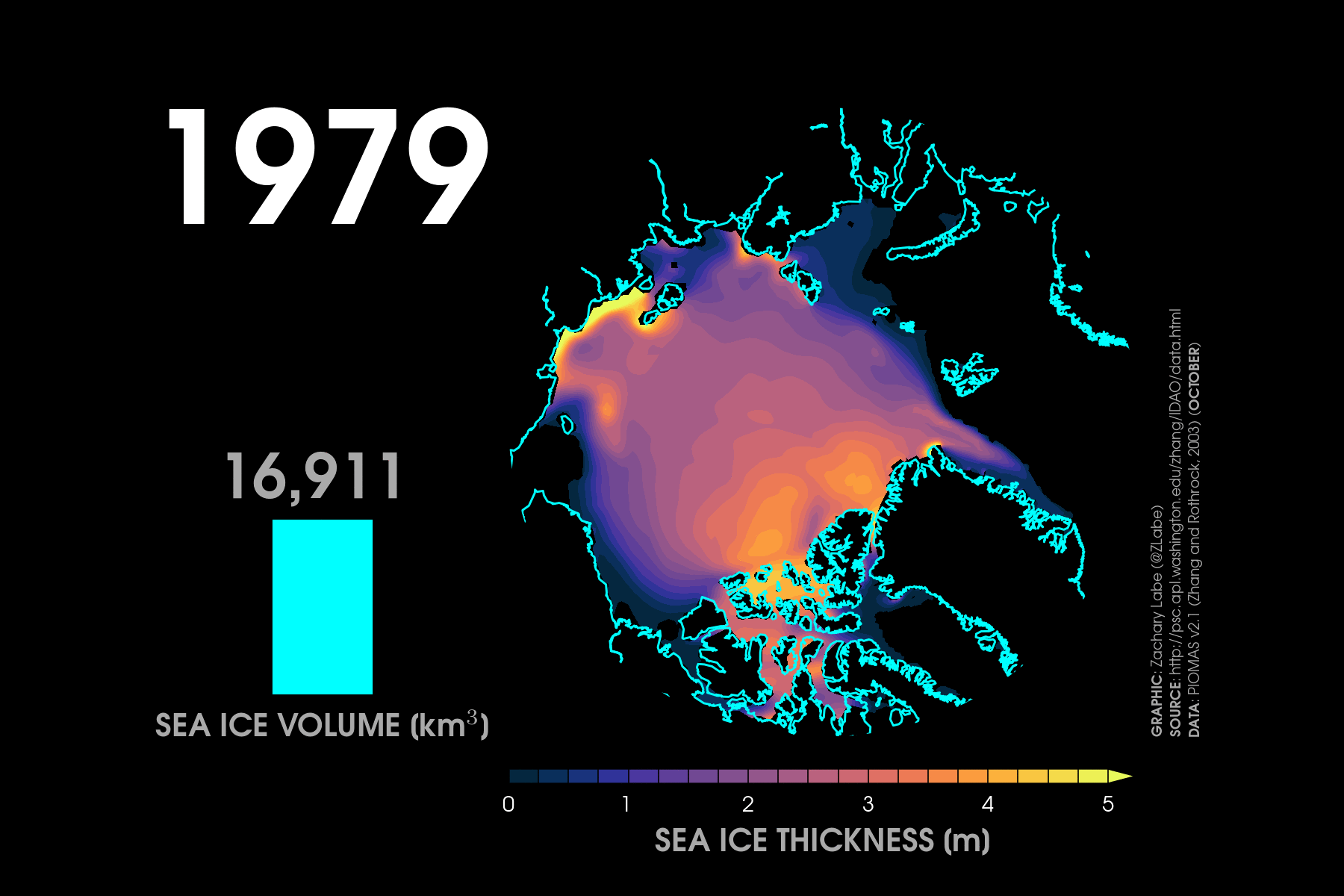

Zachary Labe’s animation showing decline of long-term ice in the Arctic. Long-term variability and loss of February #Arctic sea ice volume (left) and thickness (right) during the satellite era. Data from PIOMAS, graphic by Zachary Labe.
Polar bears need Goldilocks ice. There isn’t much.
Zachary Labe’s .gif shows the decline in ice thick enough from which polar bears can hunt, right up to 2018. Hunting areas for the bears decline, and bears will go hungry and cubs will die.
Polar bear researcher Andrew Derocher told us on Twitter what the graphic means:
Great graphic to refute deniers spouting that there’s more sea ice in the Arctic. For
#polarbears, it’s a Goldilocks scenario: sea ice can’t be too thick, too thin, too much, too little, it has to be just right. Of course, too thick isn’t an issue anymore.
Though the dangers to polar bears “isn’t an issue anymore” among scientists, it is also true that denialists, especially on blogs, Twitter and Facebook, drive opinion contrary to science and against the interest of the survival of polar bears. A paper by a group of scientists including members of the Polar Bear Specialist Group recently detailed that the internet legions of denial convince many people polar bears are not in trouble, making it difficult to work to save the animals.
Abstract
Increasing surface temperatures, Arctic sea-ice loss, and other evidence of anthropogenic global warming (AGW) are acknowledged by every major scientific organization in the world. However, there is a wide gap between this broad scientific consensus and public opinion. Internet blogs have strongly contributed to this consensus gap by fomenting misunderstandings of AGW causes and consequences. Polar bears (Ursus maritimus) have become a “poster species” for AGW, making them a target of those denying AGW evidence. Here, focusing on Arctic sea ice and polar bears, we show that blogs that deny or downplay AGW disregard the overwhelming scientific evidence of Arctic sea-ice loss and polar bear vulnerability. By denying the impacts of AGW on polar bears, bloggers aim to cast doubt on other established ecological consequences of AGW, aggravating the consensus gap. To counter misinformation and reduce this gap, scientists should directly engage the public in the media and blogosphere.
Reduced ice means smaller, less healthy cubs, hungrier less healthy mothers, hungrier, more-likely-to-eat-cubs males.
While denialists rage, the Earth still warms. Eppure, lei si scalda.
Tip of the old scrub brush to Andrew Derocher on Twitter.






